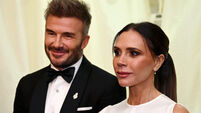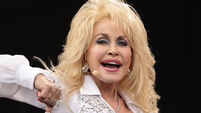As King Charles prepares for his crown, we look at other coronations around the world
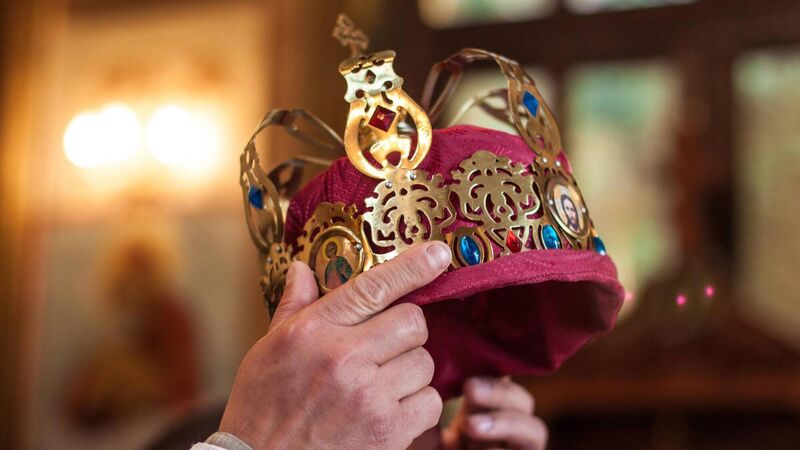
Crown in the hands of the pastor at the time of the coronation
The so-called “cost-of-living coronation”in the UK will actually be a three-day extravaganza, including two grand processions and a star-studded concert with a laser light show at Windsor Castle.
On Saturday, May 6, in Westminster Abbey, the Archbishop of Canterbury will place a crown of solid gold on King Charles III’s head. St Edward’s Crown weighs 2.23kg — equivalent to five or six family-size cans of baked beans! For most of the ceremony, the king will sport the less weighty (1.04kg) Imperial State Crown, carrying the controversial Cullinan II diamond from Britain’s Transvaal colony.
Meanwhile, the queen consort has opted for a much lighter (0.59kg) crown, that worn by Queen Mary of Teck in 1911.
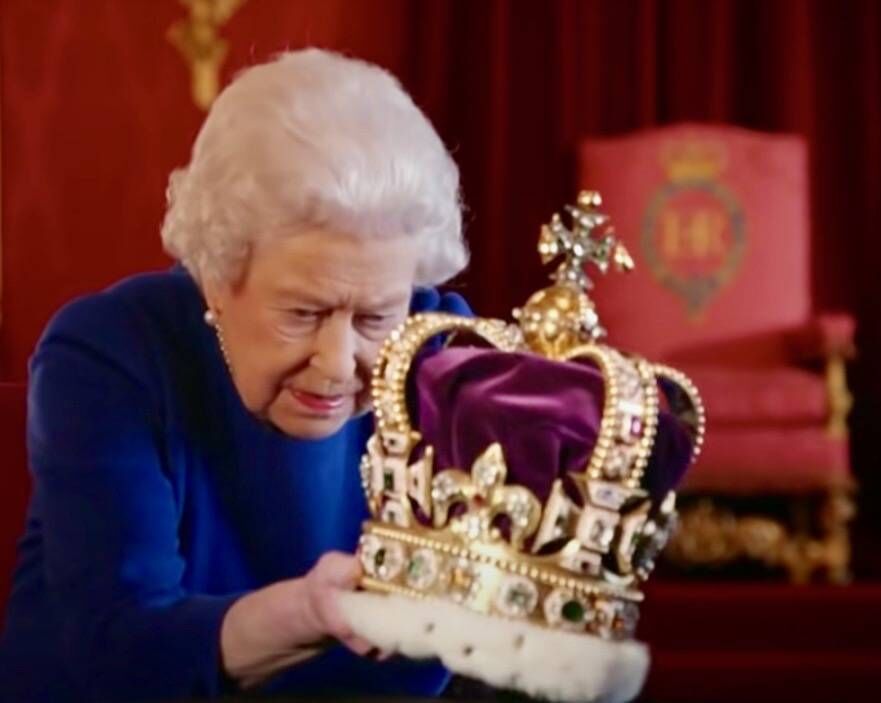
A giant, 260-year-old gold state coach, drawn by eight horses, will convey the royal couple back from the Abbey to Buckingham Palace.
The UK is now the only European country to hold coronations: Spain’s last monarch to be crowned was Joan III of Navarre, way back in 1555; Denmark, Sweden, and Norway had all ditched the ceremony by 1906. Luxembourg and the Netherlands have never had coronations, while in the Kingdom of Belgium there’s not even a crown for the sovereign to wear.
But outside Europe, coronations are still going strong. In recent times, there have been some highly colourful ceremonies.
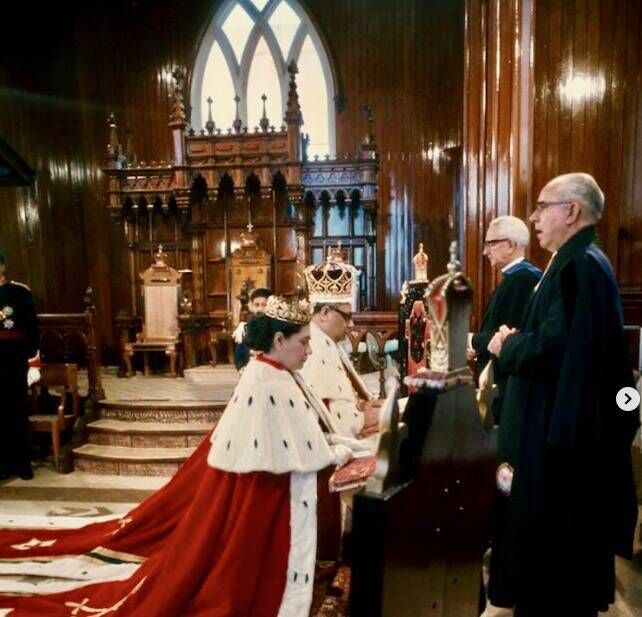
Representatives from governments worldwide, and thousands of islanders from the warm South Seas, loaded with mountains of luggage, have been arriving in Tonga on planes and buses for over a month. Everyone — including 12,000 flag-waving schoolchildren — wants a glimpse of King Taufa’ahau Tupou IV and Queen Halaevalu Mata’aho’ Ahome’e.
Dressed in mantles of crimson velvet capped with white ermine, and followed by pageboys and pagegirls, the royal couple bows their white cockades to enter the chapel. As the choir finds full voice, they settle in high-back mahogany chairs for the coronation ceremony, conducted in the Tongan language by two Australian Methodist priests wearing plain black vestments. Forty-nine years old this very day, the corpulent (130kg) king keeps his thick-rimmed spectacles on throughout, occasionally dabbing his nose with a tissue.
The priests place the heavy, diamond-studded Gold Crown of Tonga on the king’s head, while the queen receives a much lighter and plainer coronet.
The pealing of the chapel bell and deafening cheers await them as they emerge into dazzling sunlight. A wave from the verandah, then it is time for the feast. Guests sit at long tables, gorging on specially fattened pigs and chickens: villages have competed to produce the most succulent dishes. Prisoners have been released from local gaols to join the fun.
Soon the king reappears in a white robe, ever ready to accept and count gifts. Wealthy women bring finely woven mats. Villagers form a circle and quaff kava (made from squashed pepper roots), while the couple watches a display from a Fijian warrior, and traditional dances, performed by hundreds of men and women in grass skirts and feather headdresses.
Seven days later, celebrations reach a climax in a fabulous fireworks display.
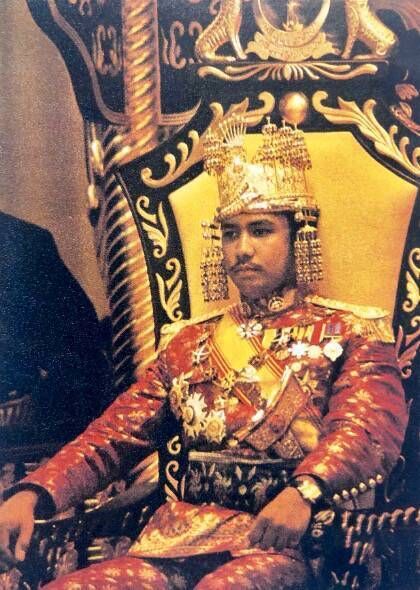
Escorted by a lengthy procession of soldiers wielding swords, shields, and spears, the 29th sultan of oil-rich Brunei returns from his coronation in the Lapau Palace. His father, who abdicated last autumn, has just lowered the rich gold crown on him, while his mother has placed a coronet on his wife.
Sitting on a fabulous golden chariot, 22-year-old Hassanal Bolkiah and Queen Pengiran Anak Saleha are paraded through streets thronged with thousands of brightly-dressed wellwishers, who have been waiting since daybreak to pay homage.
When Brunei achieved independence from Britain in 1984, the sultan also became prime minister, defence minister, and finance minister. In this tiny totalitarian state — population less than half a million — no elections are allowed, and to criticise the sultan is sacrilege. As a divine ruler, he claims infallibility, and retains an iron grip on power.
One of the richest men in the world, worth an estimated $30bn, Hassanal (now aged 76) lives in the Istana Nurul Iman, a luxurious palace boasting a gold dome, and reputedly owns a mind-boggling 500 gold-plated Rolls Royces, besides a jumbo jet with gold fittings, worth $233mm.
No glitzy abbey or palace malarkey, but a sports stadium packed to the rafters. Spectators cheer wildly while the king dons a leopard-skin tunic emblazoned with a golden crocodile. Three helicopters fly past, trailing blue, green, and white smoke — the colours of Lesotho’s flag.
While Nelson Mandela and Prince Charles look on, a tribal chief crowns 34-year-old Letsie III with a beaded calfskin headband, before placing a long grey feather in his hair.
Instead of the discrete twist of the hand British monarchs give from inside their coronation carriages, we see frantic waving from King Letsie as he tours the stadium by open pick-up truck.
Now, who’s up for drumming, chanting, and bare-breasted dancing?
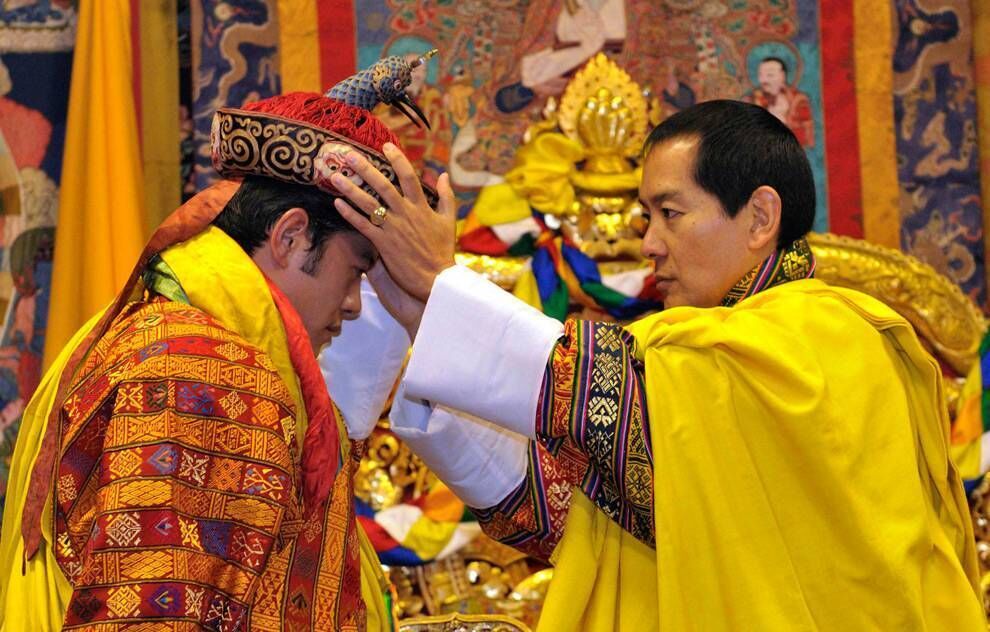
Travel writer Solange Hando ( , 2017), who was invited to the coronation, reports that “families had walked across the mountains for over a week” to the stadium to see their new king, Jigme Khesar Namgyel Wangchuck. Buddhist nuns had hitched lifts on overcrowded trucks, “after their names were picked from a bowl”.
Guests brought bags of rice, fruit and flowers, along with white scarves for good luck, and received coronation medals as a memento.
The week’s celebrations in November 2008 came “at minimum cost for the country”. The king was dressed in a modest yellow cape, and the Bhutan crown was made from satin and silk, topped with an embroidered raven’s head, “no diamonds or jewels whatsoever”.
Then came the excitement, with elephants parading, schoolchildren dancing, a strongman contest, and a tug-of-war. When the loser of a pillow fight ended up in a pool of water, the king “left his seat to have a closer look, and roared with laughter”, says Hando.
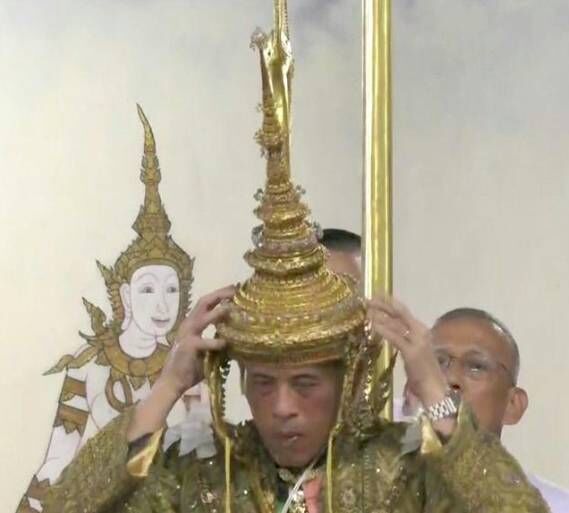
Poised on an octagonal throne, shaded by a nine-tiered white umbrella, King Maha Vajiralongkorn has his hands anointed in sacred water collected from holy rivers and ponds. On his feet, the 66-year-old “playboy King” flaunts a pair of royal slippers decorated with diamonds, their soles made from pure gold, their fronts curling into a point.
His crown, a tall, diamond-studded cone with earflaps, weighs a brain-mashing 7.3kg.
A three-day celebration follows — setting taxpayers back some $31m. Even then, the bill doesn’t include the actual coronation: the king still has to place the crown on his head all by himself!
From majestic palaces to sports stadia, spired crowns to leather headbands, fairytale carriages to pick-up trucks, coronations today boast a variety of forms, all rooted in what King Charles III calls “longstanding traditions and pageantry”.
But one thing they share: the age-old belief that monarchs are superior mortals who are born into their role. Whether unelected heads of state are still acceptable in a modern democratic world, or are anachronistic relics from a feudal past, remains a matter of debate.








